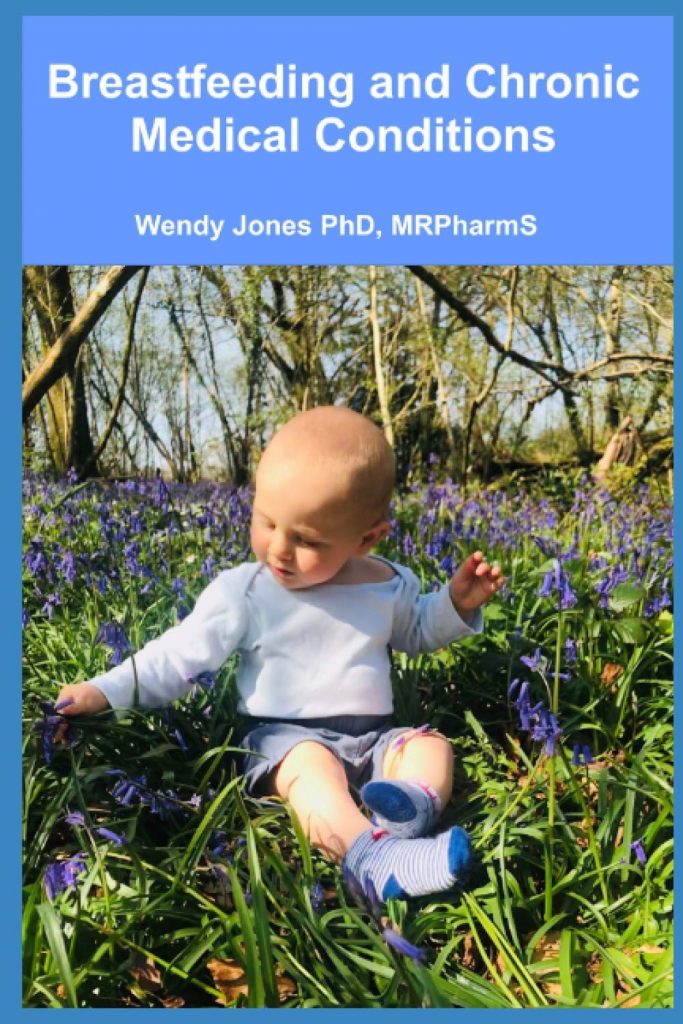Information taken from Breastfeeding and Chronic Medical Conditions available from Amazon
Type 2 diabetes develops over weeks and months rather than suddenly as type 1 diabetes does. It is estimated that 415 million people across the world are living with diabetes, approximately 1 in 11 of the world’s adult population. Type 2 diabetes is now becoming far more common in children and in young people. The number of people of any age with type 2 diabetes is increasing in the UK, as it is more common in people who are overweight or obese. It also tends to run in families. It is around five times more common in South Asian and African-Caribbean people (often developing before the age of 40 in this group). It is estimated that there are around 750,000 people in the UK with type 2 diabetes who have not yet been diagnosed with the condition.
Gunderson (2018) showed that increasing lactation duration was associated with a strong, graded relative reduction in the incidence of type-2 diabetes even after accounting for pre-pregnancy biochemical measures, clinical and demographic risk factors, gestational diabetes, lifestyle behaviours, and weight gain. The graded risk reduction ranged from 25% for 6 months or less to 47% for 6 or more months of lactation. Shwarz (2009) had previously demonstrated that women who reported a lifetime history of more than 12 months of lactation were 10-15% less likely to have hypertension, diabetes, hyperlipidaemia, and cardiovascular disease than those who had not breastfed. Breastfeeding could be said to be a positive health intervention based on these results.
Type 2 diabetes has symptoms like excessive thirst (often drinking considerable amounts of fruit squashes), needing to pass urine frequently and tiredness particularly after meals. Early symptoms of high glucose levels can be reversed by diet and exercise. At any stage lifestyle interventions can prevent further development and reverse the diagnosis.
Risk factors for type 2 diabetes are:
- Having a first-degree relative with type 2 diabetes.
- Being overweight or obese.
- Having a waist measuring more than 31.5 inches (80 cm) if you are a woman or more than 37 inches (94 cm) if you are a man. Central obesity occurs because of the effect of insulin pushing excess sugar into abdominal fat cells over the years.
- Having impaired glucose tolerance.
- Having gestational diabetes
Treatment
Non-insulin dependent diabetes (type 2 diabetes) treatment can be commenced with metformin, if dietary modification alone has not produced glycaemic control. There were no reported adverse effects on the babies in the published studies including effect on baby’s blood sugar.There is no data on any of the other oral drugs used to treat diabetes which should therefore be avoided. If metformin does not achieve control of blood sugars a breastfeeding mother may need to initiate insulin for the duration of her lactation.
Sulfonylureas be avoided during breastfeeding as they may produce hypoglycaemia in breastfed infant; Glibenclamide, Gliclazide, Glimepiride, Glipizide, Tolbutamide
There is no data on any of the other oral drugs used to treat diabetes which should therefore be avoided. If metformin does not achieve control of blood sugars a breastfeeding mother may need to initiate insulin for the duration of her lactation.
Dipeptidyl peptidase – 4 – inhibitors (Gliptins): Alogliptin, Linagliptin, Saxagliptin, Vildagliptin
Glucagon-like peptide1 receptor agonists: Albiglutide, Dulaglutide, Exanatide, Liraglutide, Lixisenatide
Meglitinides: Nateglinide, Repaglinide
Thioglitazones: Pioglitazone
References
- Gunderson EP, Hurston SR, Ning X, Lo JC, Crites Y, Walton D, Dewey KG, Azevedo RA, Young S, Fox G, Elmasian CC, Salvador N, Lum M, Sternfeld B, Quesenberry CP Jr; Study of Women, Infant Feeding and Type 2 Diabetes After GDM Pregnancy Investigators. Lactation and Progression to Type 2 Diabetes Mellitus After Gestational Diabetes Mellitus: A Prospective Cohort Study. Ann Intern Med. 2015 Dec 15;163(12):889-98)
- Schwarz EB, Brown JS, Creasman JM, et al. Lactation and maternal risk of type 2 diabetes: a population-based study [published correction appears in Am J Med. 2011 Oct;124(10): e9]. Am J Med. 2010;123(9):863.
